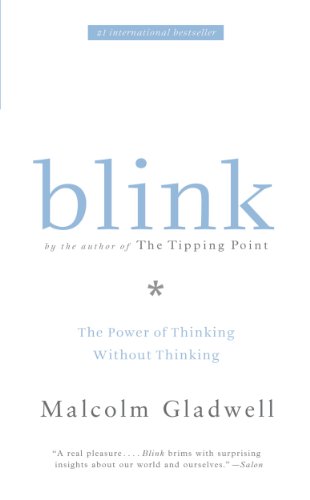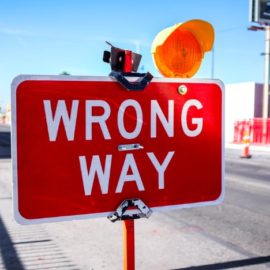

This article is an excerpt from the Shortform summary of "Blink" by Malcolm Gladwell. Shortform has the world's best summaries of books you should be reading.
Like this article? Sign up for a free trial here .
Why do we make such bad decisions sometimes? What can we do to make better decisions?
The truth is, the fact that we don’t always know what we want or like is why we make bad decisions. Keep reading to discover how we can be oblivious to our own preferences and why this hurts our decision-making process.
Why We Make Bad Decisions: We Don’t Always Know What We Like
Without structure, thin-slicing, or making intuitive decisions, isn’t as effective as it could be. Thin-slicing also doesn’t work out of context. This contributes to why we make bad decisions.
For example, love lab researcher John Gottman can predict the future of your marriage after 15 minutes of observation. But he can only do this if he’s observing you and your spouse in the right context—in this case, if you’re discussing something relevant to your relationship. He won’t have the same insight watching you and your spouse play Ping-Pong, for instance.
Context also matters when we make decisions about what we like and don’t like. When we’re assessing a particular food, product, or type of music, both our rational minds and our guts may say we don’t like something that we actually like (or have the potential to like). Sometimes, we don’t know what we want or like because we’re thin-slicing out of context. This is why we make bad decisions.
Let’s look at three reasons why we make bad decisions when it comes to knowing what we like.
Why We Make Bad Decisions, Reason #1: Sensation Transference
Sensation transference is when the way a product looks influences the way we experience it. In other words, we don’t distinguish between the product and its packaging. The packaging is part of the product, not independent of it. This could be why we make bad decisions.
When we judge a product as good or bad, the product’s packaging influences that judgment. For example, no one wanted to buy margarine in the 1940s. They didn’t like the way it tasted.
At the time, margarine was white and unappealing. Researchers discovered that if they colored it yellow to make it look like butter, and wrapped it in foil, which was a sign of high-quality, people thought that margarine tasted a lot better.
Sometimes, what we “taste” has nothing to do with flavor and everything to do with packaging. Thin-slicing, and the ability to judge a product objectively, fails when the unconscious mind is distracted by irrelevant information, like a product’s packaging. You may make a bad decision because you’re making that decision based on the packaging, not the product itself. Judging the wrong criteria is one reason why we make bad decisions.
Why We Make Bad Decisions, Reason #2: Unfamiliarity
Sometimes, we dislike something for no other reason than that it’s unfamiliar. We don’t like what we don’t know. We taste, hear, or watch something different and the unconscious mind automatically registers it as bad.
For example, television classics All in the Family and The Mary Tyler Moore Show almost didn’t make it to the air because the hundreds of viewers in market testing hated them. They thought that Family’s Archie Bunker was too abrasive and that career-woman Mary was a “loser.”
These sitcoms became two of the most successful in history. Were the opinions of initial viewers just different than those of the general public?
Probably not. Viewers thought that they hated these shows, but really, they were just shocked by them. Once they got used to them, they realized that they actually enjoyed them.
Thin-slicing fails when the unconscious mind has no previous experiences to which to compare the new experience. Unfamiliarity is another reason why we make bad decisions.
Why We Make Bad Decisions, Reason #3: Lack of Expertise
Experts aren’t fooled by a product’s packaging and aren’t put off by unfamiliarity. When judging something in their area of expertise, they’re better at knowing what they truly like because they have the experience to interpret their snap judgments.
They have the training to know what they like and the vocabulary to explain it.
Training
Experts learn how to match their unconscious feelings about a food or an object to a formal aspect of that food or object. This necessarily changes their first impressions, or snap judgments.
For example, professional food tasters spend decades developing the skills to judge foods objectively. They learn to match their sensation of a food being sweet or bitter to specific characteristics in that food. The more they practice, the better they become at identifying, for instance, not only how much citrus flavor a food contains, but how much of that citrus flavor is orange citrus, how much is lemon, and how much is grapefruit.
The more they practice, the better their ability to taste, and the more accurate their thin-slicing when confronted with a new food.
Vocabulary
Food tasters also learn a specific vocabulary to describe what they like and don’t like. For instance, a layman either likes mayonnaise or doesn’t. He might be able to give a reason for his dislike, but as we’ve seen in earlier chapters, when we try to give rational reasons for intuitive responses, those reasons are often inaccurate.
On the other hand, food tasters evaluate mayonnaise according to six characteristics of appearance (including color, lumpiness, and shine), ten characteristics of texture (including firmness and density), and fourteen characteristics of flavor, split into the subgroups of aroma (eggy), basic tastes (sour), and “chemical-feeling factors” (astringent).
Each of these 30 characteristics is rated on a 15-point scale. Food tasters use their rational minds to practice identifying and rating these characteristics. These experiences result later in unconscious decisions that are well-aligned with the earlier conscious ones. Therefore, if a professional food taster likes mayonnaise, she’s probably able to accurately tell you why.
Acting Like an Expert
Thin-slicing is more likely to fail when we lack expertise in a given area. It’s even more likely to fail when we act like experts without the requisite expertise.
We act like experts when we attempt to rationalize our snap-judgment preferences. This leads to even more confusion about what we like and dislike. This is a third reason why we make bad decisions.
We know that thinking deliberately and consciously in an environment that requires intuitive thought can block our ability to solve problems. But what if thinking deliberately and consciously also blocks our ability to know our own minds?
When we try to explain the unexplainable, we tune out our intuition in favor of the conscious brain, which is bluffing. It doesn’t know why it likes or dislikes something, but it doesn’t know it doesn’t know, and it will make up anything to satisfy itself that it knows. It wants to be an expert on its preferences.
The problem is that we tend to adjust our true likes and dislikes to fit our rationalizations. Rationalizing can lead us further from understanding ourselves and what we like.
Jam Study
For example, in one study, both laypeople and experts were asked to rank jams according to texture and taste.
When relying on thin-slicing, laypeople were basically as good at experts at ranking jam. Both shared the same opinions about the best and the worst. But when another group of laypeople was asked not only to rank the jams but explain their choices, the novices put the expert choice of Knott’s Berry Farm near the bottom of the pack and the experts’ least favorite, Sorrell Ridge, in 3rd.
When thin-slicing, laypeople were confident about what they liked. Now, having to defend their choices, they had no idea what they liked. The vocabulary of describing jam confused them.
Thin-slicing fails when we try to rationalize it. We can’t pretend to be experts when we’re not. But true food experts have internalized the language of the rational mind. Just as improv actors use deliberate, rational processes to establish rules ahead of time to improve their snap decisions in the moment, experts have the special frameworks to make intuitive decisions quickly and accurately. Rationalizing could be why we make bad decisions.
Example of Why We Make Bad Decisions: Kenna
Musician Kenna, whose music one critic classifies as a cross between British new wave and hip-hop, is loved by people in the industry. When the co-president of Atlantic Records heard Kenna’s demo, he was blown away. He flew Kenna to New York and had him sing for him in person. When Limpbizkit lead singer Fred Durst heard Kenna sing, he urged producers to sign him. Kenna went on tour with No Doubt and sold out shows in nightclubs. MTV2, the channel for MTV’s serious music lovers, played his first video on repeat, and U2’s manager claimed that Kenna was going to change the world.
But he didn’t. Every time market research firms tried to prove Kenna’s marketability, listeners didn’t like his music. Radio stations only play songs that market research has shown will appeal to their audiences. So Kenna didn’t get on the radio, and his career stalled. Did the public make a bad decision about Kenna?
What Happened?
There was no sensation transfer. People who listened to a three-minute clip of Kenna didn’t have any context for his music.
In contrast, fans who loved him had seen him play live or watched his video on MTV2. Many of the experts excited about him had also seen him perform in person.
Without seeing Kenna, the “packaging,” or knowing anything about him, listeners didn’t connect to his music. A performer’s image affects how much we like his or her music.
The music was unfamiliar. Kenna’s music is hard to classify. Is it rock? Hip-hop? R&B? It’s like no other mainstream music.
People like what they’re used to. Market research listeners had never heard anything like Kenna’s music before, and their automatic, gut reaction was that they didn’t like it. However, they might have viewed the music as innovative and interesting once they’d gotten used to it. In contrast, experts weren’t bothered by Kenna’s uniqueness. Their extensive experience had taught them to be open to new sounds and styles.
The listeners lacked expertise. Industry insiders loved Kenna. These were the people who were in the best position to actually know what they liked. They had heard thousands of songs and singers before, and they had the vocabulary to explain their likes and dislikes. They also had the experience to decode their gut reactions, to know when they disliked something or when it was just new and different.
In contrast, novices didn’t have the experience or vocabulary to differentiate unfamiliarity from dislike, and they didn’t have a background that allowed them to compare Kenna’s music to thousands of other songs and see its value.
No sensation transfer, unfamiliarity, and lack of expertise are why we make bad decisions.
How Can We Make Better Decisions?
Be frugal: Sometimes, less is more. Challenge yourself to zero in on the most essential pieces of information and forget the rest.
Don’t dismiss things just because they’re different: Try new things, and give yourself a chance to like them.
Pay attention to context: If you’re trying to decide whether you like something or not, use it in its usual or intended environment. When possible, try on clothes at home and give them a test-run at work to see if you like them as much there as you did in the store.
———End of Preview———

Like what you just read? Read the rest of the world's best summary of "Blink" at Shortform . Learn the book's critical concepts in 20 minutes or less .
Here's what you'll find in our full Blink summary :
- How you can tell if a marriage will fail, within 3 minutes
- Why your first impressions are usually surprisingly accurate
- The dark side to making first impressions, and how to avoid the,






